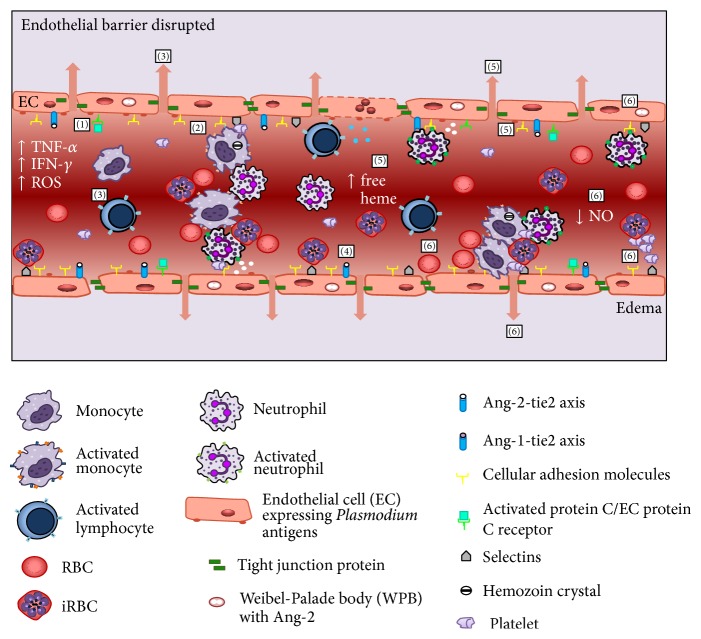Figure 2.
Targets of adjuvant therapies during malaria. Scheme showing several approaches that have been investigated aiming at modulation of malaria-induced inflammatory response. EC: endothelial cell; ROS: reactive oxygen species; SMC: smooth muscle cell. (1) Activated protein C binds to protein C receptor in activated EC cells decreasing the expression of adhesion molecules. (2) Statins decrease the production of chemokine and diminished the adhesion of leukocytes to brain microvasculature. (3) Sphingosine-1-phosphate (S1P) decreases the numbers of lymphocytes in brain vasculature and stabilizes the tight junction protein ZO-1 in brains. (4) Neuregulin-1 and bone marrow mesenchymal stromal cells induce Ang-1, which promotes stabilization of EC tight junctions, EC desensitization to TNF-α, and downregulation of ICAM-1 and VCAM-1. (5) Lipoxin A 4 decreases production of proinflammatory cytokines, impairs EC activation, and inhibits the expression of cellular adhesion molecules involved in leukocyte adhesion by stimulating the activity of HO-1, which catabolizes free heme. (6) L-Arginine or inhaled NO (iNO) reduces pulmonary edema and, in addition, decreases cytoadherence of iRBC, hemorrhagic foci, and leukocyte and platelets adherence to brain vasculature by inhibiting of WPB exocytosis that impairs the release of Ang-2 and inhibiting TNF-α production and procoagulant activity of endothelial cells.

